Hi @LarryGvarnished with Halfords Satin Lacquer
Do you spray this directly from the can or decant it to use in an airbrush?
Thanks
Stephen
Hi @LarryGvarnished with Halfords Satin Lacquer
I think we've discussed totem sizes before.While awaiting a signalbox kit, I decided to spruce up a second-hand Small Prairie by rubbing off the original insignia, spraying it lightly with Halfords Satin Black and affixing large pre-1956 totems, varnished with Halfords Satin Lacquer.
The totem are 9mm high off Methfix sheet B3, replaced in later years by BR Sheet 14. Transfers on the latter sheet were slightly larger with the large BR totem coming out at 10mm high.
I intend making up a new smokebox number plate. 4560 worked on the Cambrian section in BR days...
View attachment 213649
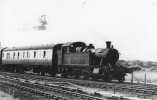
Mike (@Quintus)If I may comment , not wishing to pre empt Larry's reply, I had a very bad experience spraying varnish from an aerosol onto a recently completed 7mm coach side, which lifted the paint, resulting in a terrible mess. I had sprayed prescision paint with my airbrush, and thought acrylic varnish would be OK. I came to the conclusion that it was the propellant in the aerosol that caused the problem rather than the varnish itself.
regards
Mike
If I may comment , not wishing to pre empt Larry's reply, I had a very bad experience spraying varnish from an aerosol onto a recently completed 7mm coach side, which lifted the paint, resulting in a terrible mess. I had sprayed prescision paint with my airbrush, and thought acrylic varnish would be OK. I came to the conclusion that it was the propellant in the aerosol that caused the problem rather than the varnish itself.
regards
Mike
I can imagine the anguish. I've used cellulose since the early 1960's, mainly for speed. Anyone remember the 'Celspray' spraygun? It was like a scent bottle with a hand activated bulb. I once sprayed 50 Hornby TT gauge coaches for George Mellor (GEM) using the darn thing. You should have seen the sags across my hand. By 1970 I was using a DeVilbis Type M miniature spraygun while dad built me a compressor.If I may comment , not wishing to pre empt Larry's reply, I had a very bad experience spraying varnish from an aerosol onto a recently completed 7mm coach side, which lifted the paint, resulting in a terrible mess. I had sprayed prescision paint with my airbrush, and thought acrylic varnish would be OK. I came to the conclusion that it was the propellant in the aerosol that caused the problem rather than the varnish itself.
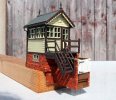
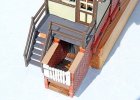

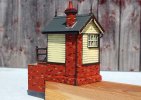
That's really captured the atmosphere of that part of North Wales, Larry.
 .
. 
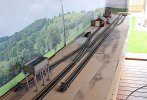
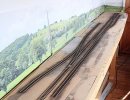






It's neat PVA, and the best I've found yet. It is applied thickly with a soft 3/4" brush. Track is lowered onto it and straightened with 3' steel ruler, then ballast poured on. It is firmly tamped with the fingers and hand for a while and the track re-checked in case it had moved. Then strips of 3" x 1" timbers placed on the track with heavy books on top.Please Larry, are you using the PVA neat to do this or are you adding something into it to help it percolate upwards?
